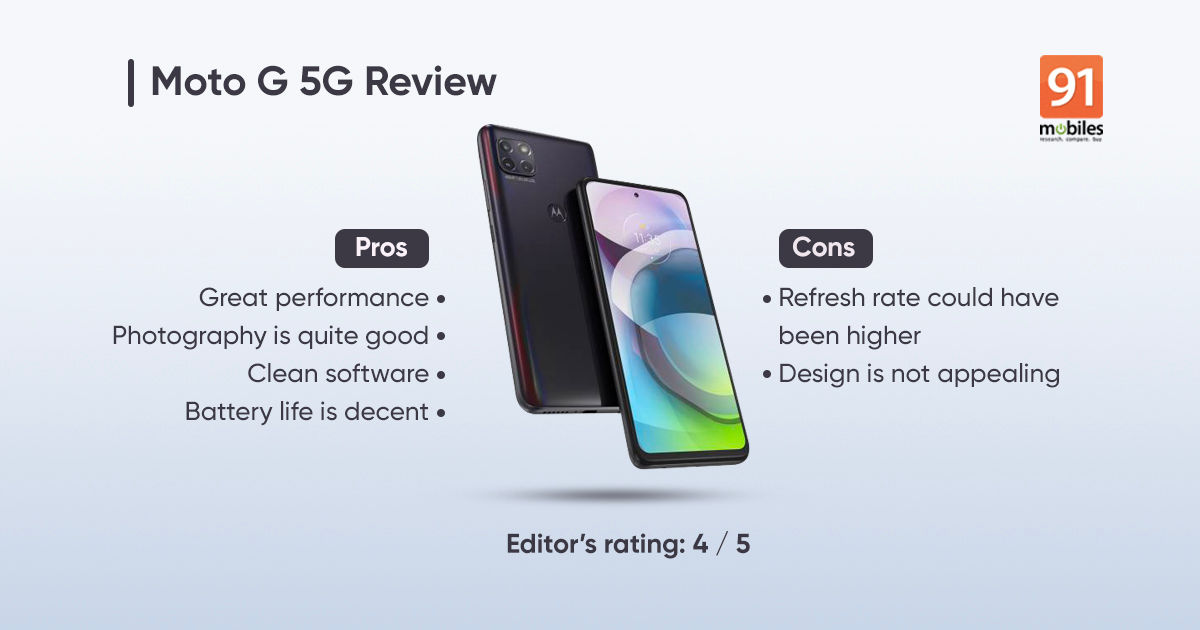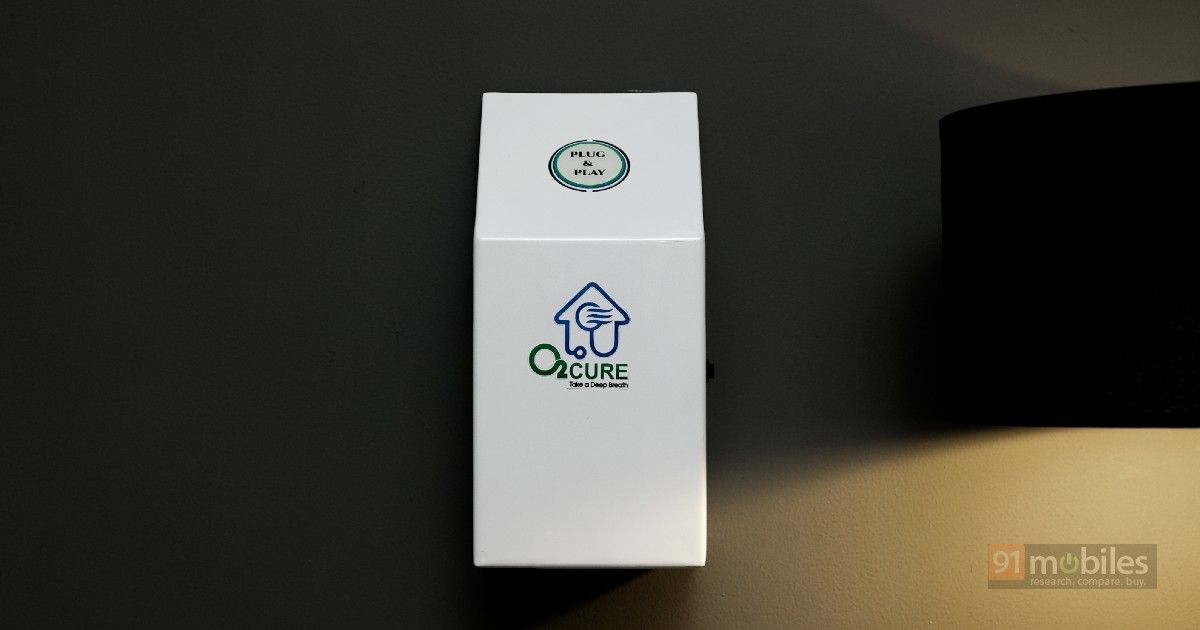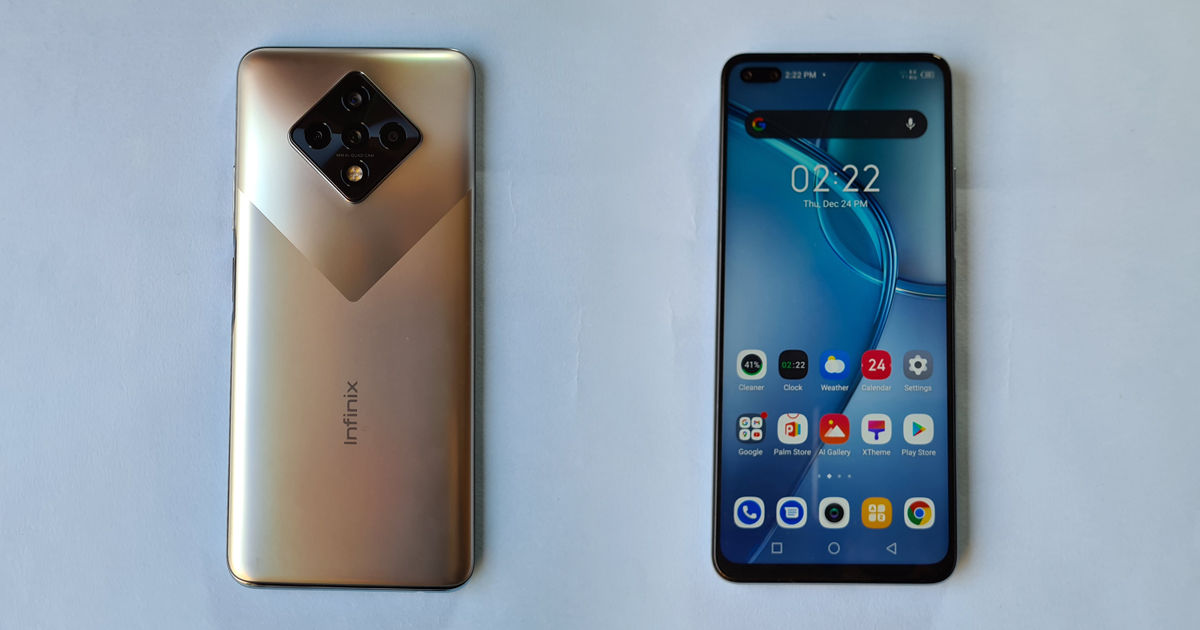Xiaomi Mi 10i review

2020 is finally in everyone’s rear-view mirror and while folks across the globe are busy readying and working on their new year resolutions, some things are set in stone. Case in point, Xiaomi’s mantra for its phones, which has always been about giving consumers everything but the kitchen sink. Well, it seems like the brand is staying true to its philosophy this year too as the company recently announced the Xiaomi Mi 10i, which comes toting a 5G chipset, a 108MP camera sensor, a high-refresh rate display…you get the gist – it’s a pretty-loaded phone. But, seeing how that’s also the case with other premium mid-range phones, is the Mi 10i worth it? Well, let’s find out in this review.
Table of Contents
Verdict
The Mi 10i is entering a hotly-contested segment, but makes for a solid buying owing to its good-looking design, reliable performance and excellent main camera. It’s not perfect, but the trade-offs that come with the Mi 10i are liveable, to say the least.
Design
With the Mi 10i, I feel Xiaomi has a showstopper on its hands in terms of design. For one, the phone comes enveloped in glass which lends the handset a superb in-hand feel. What’s more, the company has gone the extra mile and layered Corning’s Gorilla Glass v5 on both, the front as well as the back. Consequently, the Mi 10i should keep scratches and scuffs at bay. And, that’s not all, as the phone also comes with IP53 certification, meaning the device will function just fine even if you accidentally spill some water on it.
But, coming back to the phone’s aesthetics, I will admit, I am in awe of the phone’s Pacific Sunrise colourway. It mixes three different shades (Blue, Orange, and Green) rather tastefully. The icing on the cake is that the paint job comes with a frosted matte finish too, akin to the OnePlus 7T (review), which doesn’t just add to the premium feel of the phone, but it also ensures that the phone doesn’t attract as many smudges. Now, the phone is also available in two other hues which sport a glossy finish but rest assured, they don’t look as unique as the loaner unit sent to me from the brand.
Moving on, the Mi 10i comes bundled with added niceties too, like an IR blaster which will allow you to control many of your electronic appliances through the device itself. The phone also features a USB Type-C port for charging, along with a headphone jack which has become somewhat of a rarity in phones these days. I should also inform you that at 214g, the Mi 10i is quite comfortable to use on a day-to-day basis. The phone doesn’t feel top-heavy either, which coupled with the handset’s relatively narrow frame, allowed me to use it comfortably with just one hand. Do note that the phone is quite slippery so you might want to use it with the bundled TPU case. Oh, and lest I forget, the haptic feedback on the Mi 10i is quite good too. The vibrational response isn’t loose or flabby, so if you’re big on texting, you’ll find plenty to like here.
Quite frankly, the Mi 10i’s design would’ve been perfect had the brand trimmed down the camera bump ever so slightly. Still, the Mi 10i is off to a promising start.
Display
Xiaomi’s Mi 10i is a watered-down variant of the company’s Mi 10 and Mi 10T Pro and correspondingly, the device borrows some features from its pricier siblings. To that note, the Mi 10i also ships with an Adaptive sync display which adjusts the panel’s refresh rate to better the handset’s battery life. In a nutshell, the Mi 10i’s 120Hz screen will automatically jump to 48Hz whenever you play a movie on it, or to 60Hz/90Hz should you play games on the phone. As for the rest of the specs of the display, the screen measures in at 6.67-inches, is backed by LCD technology, and offers Full HD+ resolution. The display also comes with a relatively unobtrusive punch-hole notch at the centre and offers a peak brightness level of 450 nits along with Widevine L1 certification.
Quite frankly, as good as the specs of the Mi 10i’s screen are on paper, in actuality, the display leaves much to be desired. The screen is plagued by backlit bleeding which is quite noticeable around the notch and the edges of the display. As a result, I couldn’t get myself to use the phone in dark mode. Furthermore, the display is marred by a bluish tint whenever the screen is viewed off-axis and while the company claims the phone comes with support for HDR playback, the Netflix app says otherwise. In fact, I couldn’t get HDR 10 content to stream on Amazon Prime mobile app either and despite changing the streaming quality to ‘Best’, HDR-ready shows like the latest season of Grand Tour were still capped at full HD.
While the viewing experience wasn’t to my liking, I cannot refute the fluidity offered by the Mi 10i’s 120Hz screen. The display is a godsend for anyone who spends a good chunk of time scrolling through pages and threads online. What’s more, despite being powered by a mid-tier chip, the Mi 10i didn’t randomly drop down to a lower refresh rate either. All things considered, the Mi 10i’s display is good but there’s certainly room for improvement here.
Cameras
The Xiaomi Mi 10i is India’s first phone to come equipped with the all-new Samsung HM2 108MP Sensor. Much like the HM1 sensor from the brand, the HM2 also does 9-to-1 pixel-binning to output detail-rich images. As for the rest of the camera stack, the smartphone features an 8MP ultra-wide angle sensor with a FOV of 120-degrees, along with a pair of 2MP depth and macro sensors. For selfies, the smartphone comes equipped with a 16MP sensor upfront.
So, is the Xiaomi Mi 10i any good for clicking photos? Absolutely. In fact, barring a few knick-knacks, the phone’s camera performance rarely disappointed me. Let’s start with the daylight shots and here. The Mi 10i clicks authentic, true-to-life photos with an abundance of details in every shot. The images were always properly exposed and I didn’t find any instances of highlight clipping, even when I was clicking photos of a bright blue sky. That being said, under artificial lighting, I noticed that the phone would often muck up the contrast. A good example of the same is the photo of my pet Simba and here, his nose, as well as the green mat he’s sitting on appear more punchy than they should be.
Coming to the 108MP photos, the Mi 10i will pleasantly surprise you with extremely good-looking stills. There’s plenty of detailing in the shots, and while the image’s colour temperature does sway a bit to the warmer side, they’re still on par if not better than high-res shots from competing devices. One thing to note here is that the Mi 10i doesn’t take any corrective measures to reduce the noise in the high-res mode. As a result, you’ll notice graininess in the darker parts of most 108MP photos. Again, this can be addressed via a software update so I’m hoping Xiaomi fixes it soon.
As for the assisting shooters, well, they’re nothing to write home about. The ultra-wide sensor offers a wider FOV albeit exhibits poor corner detailing and colour temperature disparity when switching from the main lens. Don’t get me wrong, the images are usable, but I’d advise you to keep your expectations in check here. Same goes for the 2MP macro sensor, which will require you to click closeups with surgical precision. Even then, the output is usually hazy.
In terms of low light, the Mi 10i’s primary camera is a bit of a hit and a miss. With the night mode enabled, the phone brings out perceptible details from the shadows, albeit oversharpens the scene grossly. The shots I clicked around my society after the sun had set are a good example of the same as they exhibited good corner details and outputted a balanced exposure, but were quite oversharpened too. If you look at the buildings in the frame, you’ll notice how the Mi 10i’s post-processing is forcing the vertical and horizontal lines to stick out. I’m sure this can be rectified with a bit of software tweaking and should that happen, the Mi 10i could very well offer the best low light camera in its segment.
As for selfies, the Mi 10i’s 16MP selfie shooter clicks good, albeit beautified photos. Even with all the beautification features turned off, my complexion was still being portrayed fairer than it actually is. That said, the portrait mode is quite good on the Mi 10i and the phone managed to cut a neat bokeh around my face and unruly jacket. Lastly, you should know that the Mi 10i comes with level 3 support for cam2api and consequently, should support all features of a GCam port if it’s made available down the line.
Audio and Biometrics
I don’t think I’ll get to say this for many phones which will launch this year, but the Mi 10i ships with a headphone jack. What’s more, the smartphone supports Hi-Fi audio too, and correspondingly, the Mi 10i can play high-quality 24-bit tracks seamlessly. You’ll also get a dual-speaker setup with the phone, which once again, is not commonplace for devices in the Mi 10i’s price range. The speaker setup on the phone is quite loud, albeit lacks a bit of depth in the low-end. Regardless, it’s plenty good for watching YouTube videos or binging on Netflix on the fly.
In terms of biometrics, the Mi 10i ships with a capacitive fingerprint sensor embedded on the power button. The sensor is extremely quick to register fingerprints and unlocks the phone in the blink of an eye. It’s quite reliable too, and I rarely had to tap on the sensor twice for it to unlock the phone.
Do note that if you want to avoid accidental unlocks, then you can choose to have the mechanism to kick in with the press of the power button, instead of a tap on the sensor. Moving on though, the phone also ships with face unlock, which works just as well too. The smartphone even comes with ‘lift to wake’ the display functionality which allowed me to get into my home screen in one swift motion.
Performance and software
The Xiaomi Mi 10i is only the second phone in the country to come equipped with Qualcomm’s Snapdragon 750G processor which, in the case of my review unit, works alongside 8GB of RAM and 128GB of UFS 2.2, user-expandable storage. That’s right folks, the phone also features the newer flash storage and consequently, will offer better read and write speeds when compared to devices like the OnePlus Nord and the Samsung Galaxy M51, both of which adhere to UFS 2.1 platform.
It shouldn’t come as a surprise then, that the Xiaomi Mi 10i is a capable performer and I seldom ran into any instances of lag or stutter whilst using the phone. In fact, the only time the phone showed any signs of slowing down was when I opened the YouTube app in PiP mode and was using WhatsApp at the same time. Other than that, the phone could comfortably hold multiple apps in memory and had no issues running graphics-intensive games either. To give you a better picture, I was able to play Call of Duty Mobile for over an hour without noticing any performance or thermal hiccups. The game was running at Very High Graphics and Very High Frame Rate and even in the heat of a battle, I didn’t notice the frames fluctuate all that much.
If you’re more of a benchmarks person, then fret not. I did run a slew of synthetic tests on the Mi 10i, and the device performed as it should. As can be clearly seen from the graphs, the Mi 10i’s performance is on par with Snapdragon 765G toting devices. In fact, the only phones which will offer better bang for your buck in this price segment would be Snapdragon 855/855 + flagships from yesteryears.
In terms of connectivity, the Mi 10i is somewhat future-proof as the handset is Wi-Fi 6 and 5G ready. What’s more, I got stellar internet speeds on my Airtel postpaid connection in Dwarka, Delhi too and the call quality through the earpiece was to my satisfaction as well.
Things aren’t as fine and dandy on the software side, unfortunately. For one, the Mi 10i still boots Android 10 which for a phone launching in 2021 is a big red flag. Secondly, the smartphone comes with a ton of bloatware, including a bunch of games and Xiaomi’s own suite of security and cleaning apps. There are some useful utilities present here too, including support for navigational gestures and a feature-rich theme store, but an update to Android 11 would make the interface that more likeable.
Battery life
The Xiaomi Mi 10i is fuelled by a 4,820mAh battery which comfortably saw me through the end of a day on heavy usage. The handset’s solid battery life can be accredited to the phone’s 8nm SoC, as well as MIUI’s rigorous battery-saving algorithms that ensured I had plenty of juice in the tank even when I hit the bed. During my stint with the phone, I was routinely netting over five hours of screen on time, with at least 25 percent battery to spare. Moreover, the phone comes bundled with a 33W brick which allowed me to juice it up from 0-100 percent in just 55 minutes.
Final Verdict
The Xiaomi Mi 10i starts at Rs 20,999, with the model I reviewed retailing for Rs 23,999 in India. For the price, the Mi 10i makes for an easy recommendation and offers a capable set of cameras, good audio setup and solid performance with 5G smarts. All that is layered into a beautiful design which will undoubtedly attract eyeballs every time you take it out of your pocket. That said, there’s no shortage of compelling devices in the market and the Mi 10i faces stiff competition from the Samsung Galaxy M51 (review), the OnePlus Nord (review) and the Moto G 5G (review).
In my books, the Mi 10i puts forth a more complete package, though users looking for even better battery life and an AMOLED display should opt for Samsung’s offering. The Moto G 5G also makes a strong case for itself by offering a stock Android experience. However, the Mi 10i counters that with a better set of cameras and a high-refresh rate display. As for the OnePlus Nord, while the smartphone does offer a much better display, along with a good-looking design, but the Mi 10i is cheaper, offers a better audio setup and a superior camera sensor. Choosing between the four is no easy feat, but rest assured, all these phones offer tremendous value for your buck. Do let us know in the comments below if you’d pick the Mi 10i over the competition, and for more reviews, stay tuned to our blog.
Editor’s rating: 4 / 5
Pros:
- Gorgeous design
- Excellent battery backup
- Good audio setup
- Capable performer
Cons:
- Not the best LCD display in the biz
- Still boots Android 10
- Plenty of bloatware
Photos by Raj Rout







